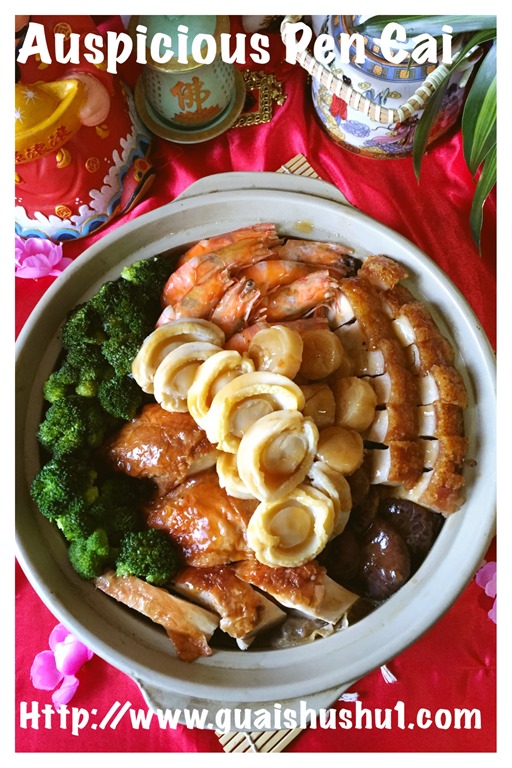The 20-Second Trick For "From Imperial Dish to Festive Tradition: The Story of Pen Cai"

A Deeper Look at Pen Cai: China's Festive One-Pot Surprise
China is a nation abundant in culinary heritages, and one meal that stand up out during the course of joyful celebrations is Pen Cai. Likewise recognized as "poon choy" or "basin meal," Pen Cai is a delectable one-pot marvel that has come to be an important part of Chinese New Year festivities. This dish is a sign of wealth, prosperity, and communal dining. Permit's take a closer appeal at the record, substances, and planning of this cheery delicacy.
The Record of Pen Cai
Pen Cai has actually its roots in the southerly location of China, specifically in the Cantonese dishes. It come from from the practice of villagers cooking a communal food throughout times of event like wedding celebrations or celebrations. Over opportunity, it became identified with Chinese New Year celebrations – a time when families acquire to invite the coming year with excellent lot of money and treat.
The title "Pen Cai" equates to "basin veggie" in Cantonese. Traditionally, this meal was prepared by layering active ingredients such as veggies, chicken, sea food, and various other delicacies in large basins or flowerpots. The flowerpot was at that point steamed or braised for hours to permit all the tastes to unite all together.
Active ingredients Used in Pen Cai
Pen Cai is a treasure trove of diverse elements that embody different components of Mandarin food. While there are no meticulous rules on what goes into Pen Cai today, traditional recipes typically include an assortment of extravagant active ingredients representing wide range and abundance.
Some typical components discovered in Pen Cai feature:
1. Seafood: Abalone, shellfishes, fish hole
2. Chicken: Roast pork belly (siew yoke), roasting duck

3. Poultry: Chicken or duck
4. Mushrooms: Shiitake mushrooms
5. Vegetables: Chinese broccoli (bok choy), black marsh (fat choy)
6. Dried out seafood: Ocean cucumber, fish sac, dried scallops
7. Grain curd products: Beancurd skin (fu chok), tofu
These elements are carefully selected for their symbolic meaning and preference. For example, abalone stands for great ton of money and wealth, while fish hole symbolizes abundance.
Prep work of Pen Cai
Prepping Pen Cai is a labor-intensive method that requires perseverance and cooking knowledge. The dish is typically prepared in coatings to make sure that each component takes in the flavors of the others.
Initially, the large pot or basin is lined along with active ingredients that need a lot longer cooking times, such as meat and chicken. Find Out More Here are typically braised till tender before other components are incorporated.
Next off, veggies like Mandarin broccoli or bok choy are incorporated to develop a mattress for the other components. This level incorporates quality and equilibriums out the grandeur of the meat product and sea food.
Sea food such as abalone, prawns, and fish maw are after that naturally arranged on leading of the vegetables. These glamorous components incorporate a contact of opulence to the dish.
Ultimately, dried sea food like sea cucumber and dried scallops are incorporated to enrich the umami tastes further. The whole container is then churned or steamed for several hours to make it possible for all the tastes to meld with each other in to a good whole.
Providing Pen Cai
Pen Cai is generally served at huge events or household get-togethers throughout Chinese New Year festivities. The communal facet of this food creates it perfect for discussing with liked ones.
When offering Pen Cai, each guest can easily help themselves coming from the common flowerpot utilizing personal dish or platter. It is normal to begin with the bottom coating first – often chicken or poultry – before relocating on to enjoy all the other coatings loaded with various delicacies.
The combination of flavors in Pen Cai generates a definitely special dining take in that celebrates abundance and togetherness. It is a recipe that delivers individuals together and represents prosperity for the happening year.
In conclusion, Pen Cai is not just a great tasting one-pot miracle; it is a dish that personifies Chinese heritages and values. Its background, wealth of components, and labor-intensive prep work help make it unique and special. So, upcoming time you have the chance to attempt Pen Cai throughout Chinese New Year celebrations, enjoy each snack and enjoy the rich cultural importance responsible for this cheery delicacy.
